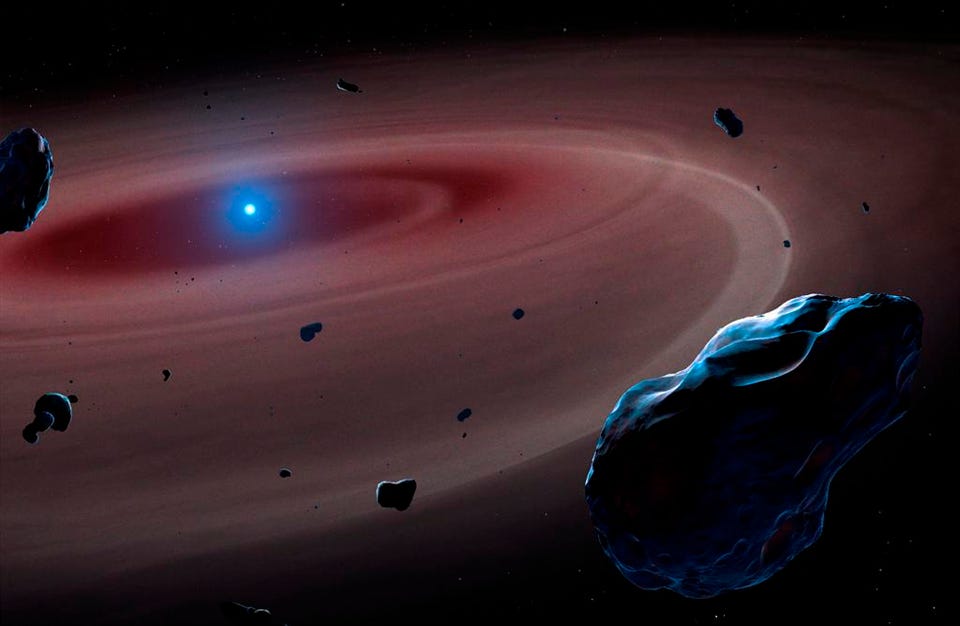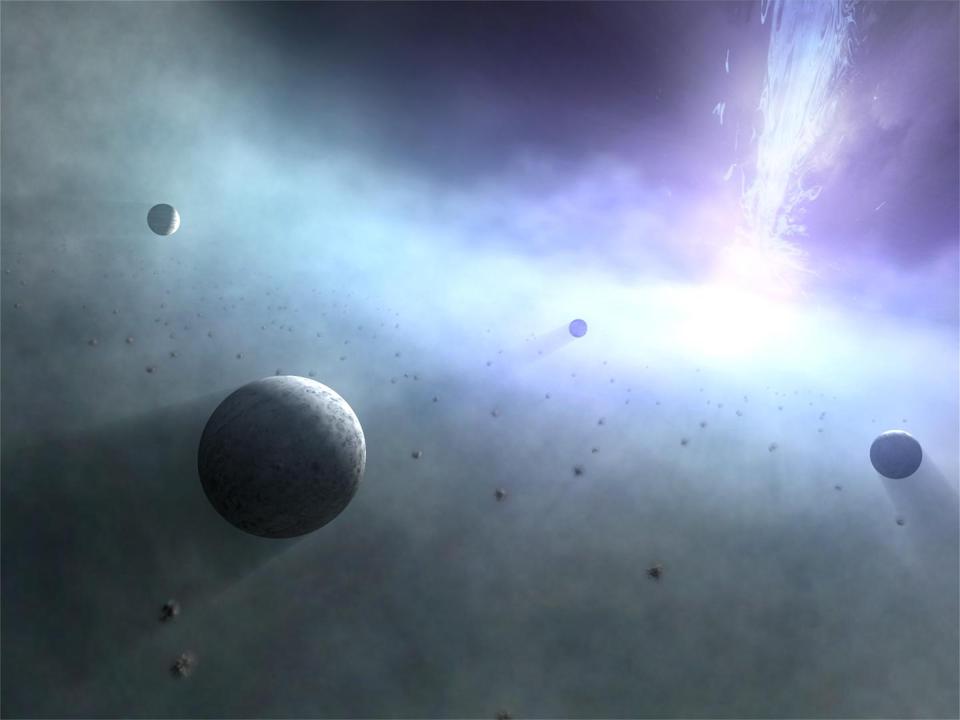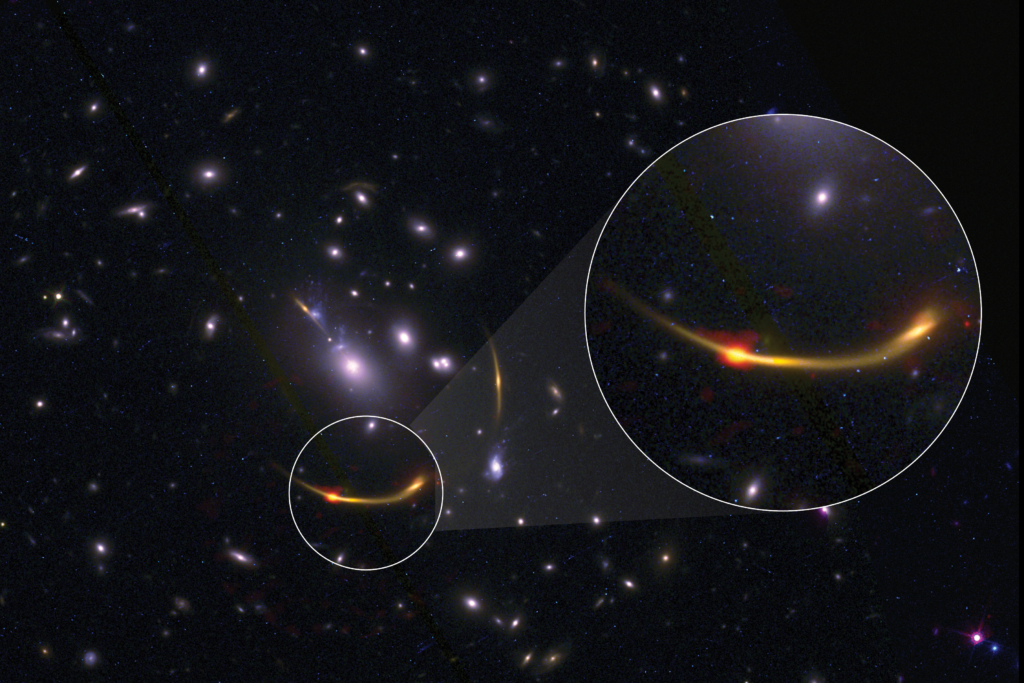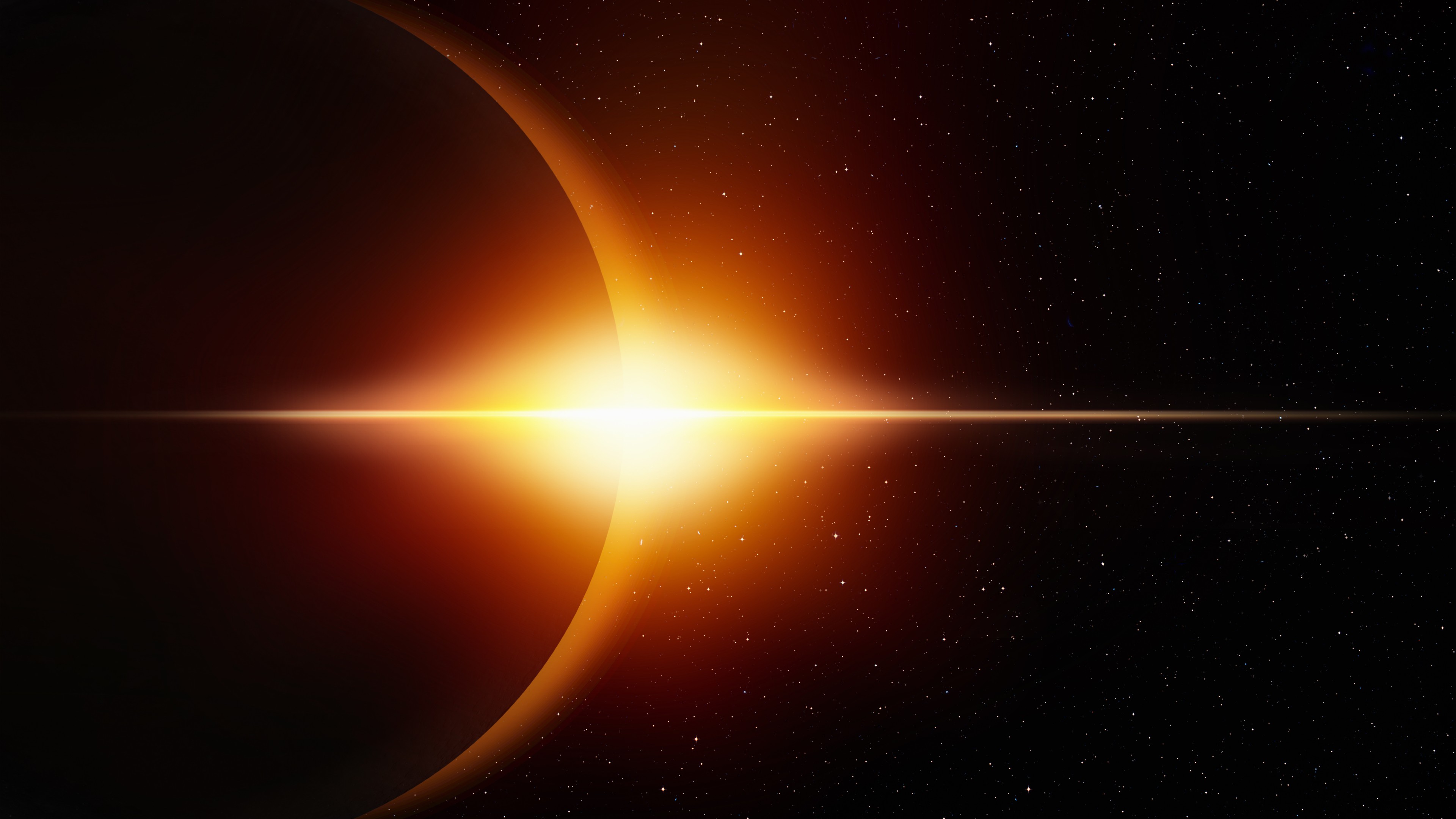Astronomers race to save the night sky, but will anyone listen?
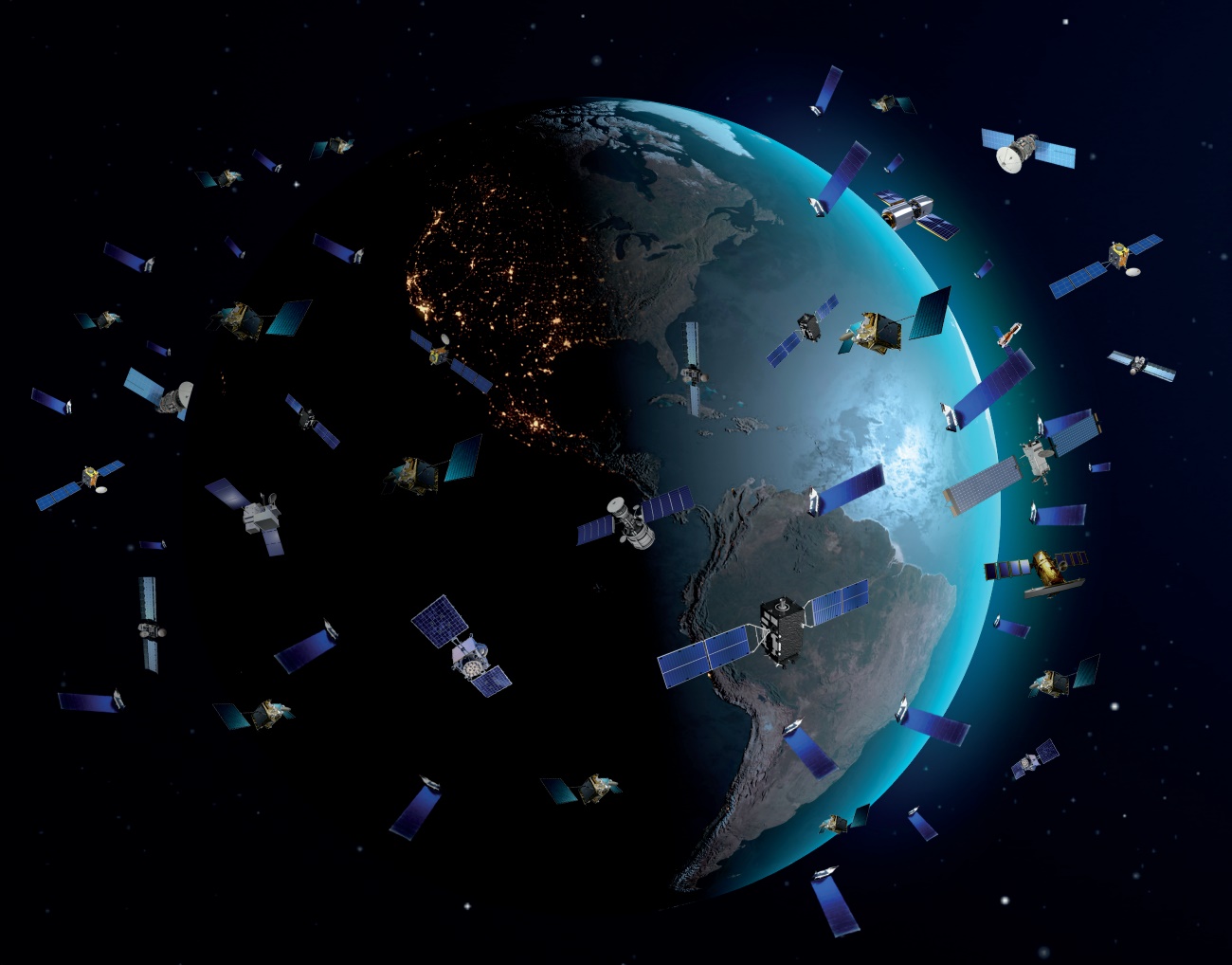
- The era of satellite megaconstellations is just beginning, with over 1,000 launched since 2019 and tens of thousands more on the way.
- Megaconstellations will negatively affect professional astronomy, the safety of Earth, our terrestrial environment, and the night sky.
- Although we’ve taken some marginal steps to mitigate these risks, significant help and regulation is needed, or the sky as we know it could be lost forever.
Since the dawn of humanity, the wonders of a clear, dark night sky have been our constant companion. Whenever a cloudless, moonless night greeted us, our reward was the glimpse of thousands of stars, the Milky Way, and the naked-eye planets — plus whatever meteors, comets, and deep-sky objects happened to be visible at the time. The night sky was a part of all of our lives — humans and animals alike — with our views limited only by the constraints of human vision.
Over the past few centuries, we’ve built and developed tools to help us better observe the universe. Telescopes, cameras, CCDs, and other technologies have paved the way for us to understand our place in the cosmos. But the advent of electrical lighting began to work against us. Today, most humans can only see the brightest stars, as traditional and LED lighting have taken away those pristine views from most of us.
While education and mitigation efforts have been made to stop the spread of light pollution, a novel problem has suddenly taken center stage: the advent of cheap and ubiquitous satellites in low-Earth orbit. Beginning in 2019, an enormous number of bright, low-flying satellite swarms — known as megaconstellations — began to go up. Today, these megaconstellation members comprise approximately half of all active satellites, and estimates suggest there could be more than 100,000 orbiting Earth by end of the decade. To study and mitigate the damage to astronomy and beyond, scientists and industry representatives met this July for SATCON2, with astronomers having just released their official reports from that workshop. Here’s what everyone needs to know.
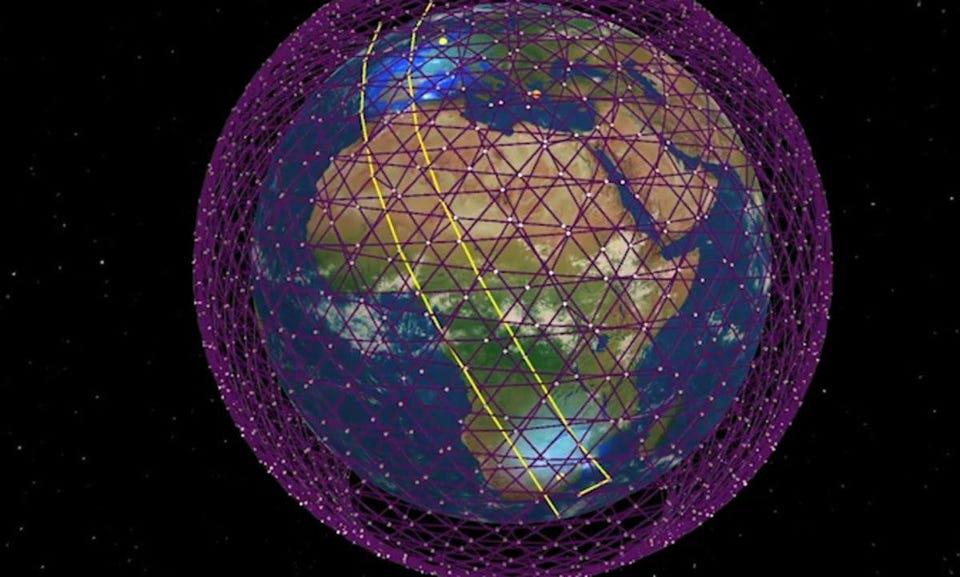
Credit: SpaceX/Starlink
The key issue is that an unprecedented number of massive, large, bright, and reflective satellites are being launched into low-Earth orbit, and this is fundamentally transforming the night sky. The impacts will be felt most severely by all those who use the night sky as a resource. This is already impacting professional and amateur astronomers and astrophotographers, of course, but it will also affect many other groups of people, including:
- satellite operators
- policymakers
- environmentalists and geoengineers
- stargazers
- people whose cultural heritage is linked to the night sky
The good news is that if we choose to act swiftly, we can minimize the impacts of the next generation of satellites. We can take steps to preserve the night sky and the environment around the Earth for generations to come. And we can prevent our short-term infrastructure ambitions from hampering the peaceful and scientific uses of space we so thoroughly rely on today. Building on earlier studies like SATCON1 and 2020’s Dark & Quiet Skies report, the SATCON2 working groups pointed out five major impacts that this new generations of satellites will have on the world, and has paved a path forward for us to mitigate the most dire of these effects. Here’s what’s at stake.
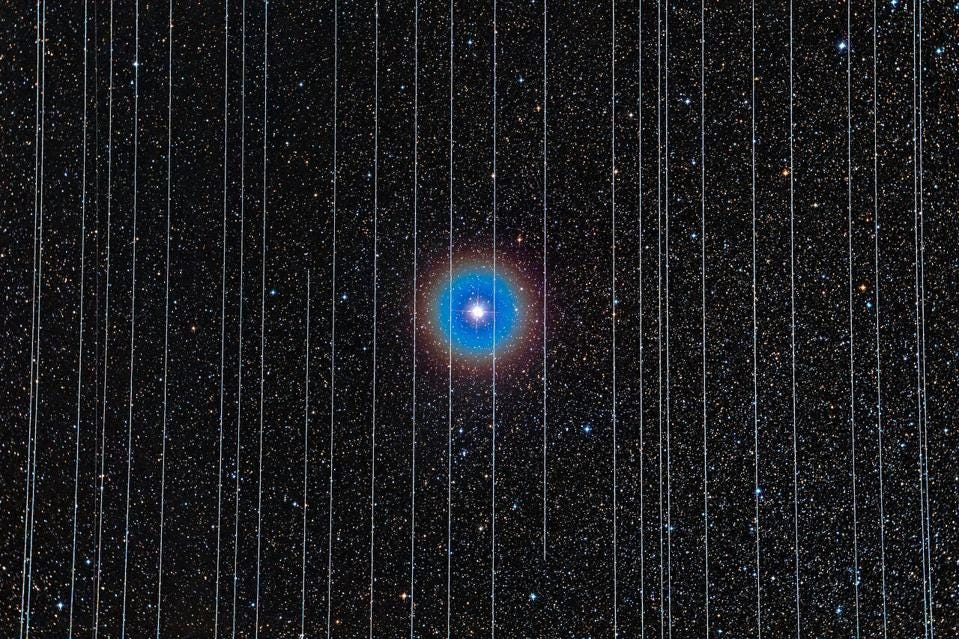
(Credit: Rafael Schmall)
1.) The individually bright satellites themselves. Most of us have seen satellites before. From up above Earth’s atmosphere, in the environment of space, these objects have graced our skies since the launch of Sputnik back in 1957. Although these satellites did have minor impacts on astronomers and stargazers alike, the sight of an occasional satellite or the removal of a satellite “streak” from a series of exposures wasn’t a catastrophe in any sense.
But just as “death by 1,000 papercuts” is a real thing, a large number of these satellites can have a catastrophic impact. These satellites will appear bright and reflective, particularly when they’re in direct sunlight and close to the Earth; low-Earth orbiting satellites near dusk and dawn will have the greatest negative impact. Approximately 1% of satellites will be visible to a surface-dweller at any moment in time; in short order, the number of visible satellites can rival the number of visible stars.
This will particularly impact professional observatories, especially those with wide-field views. The Vera Rubin observatory is expecting that 30 to 40% of their exposures to be polluted by these newly launched satellites. None of these recommendations have been universally accepted thus far, despite recommendations by astronomers that:
- only the minimal number of satellites be launched
- satellites remain under 600 km in altitude,
- they be kept below +7 magnitude
- satellite providers provide continuous and accurate positional data
- funding be allocated toward software and hardware mitigation
To be blunt, voluntary compliance is proving to be insufficient.
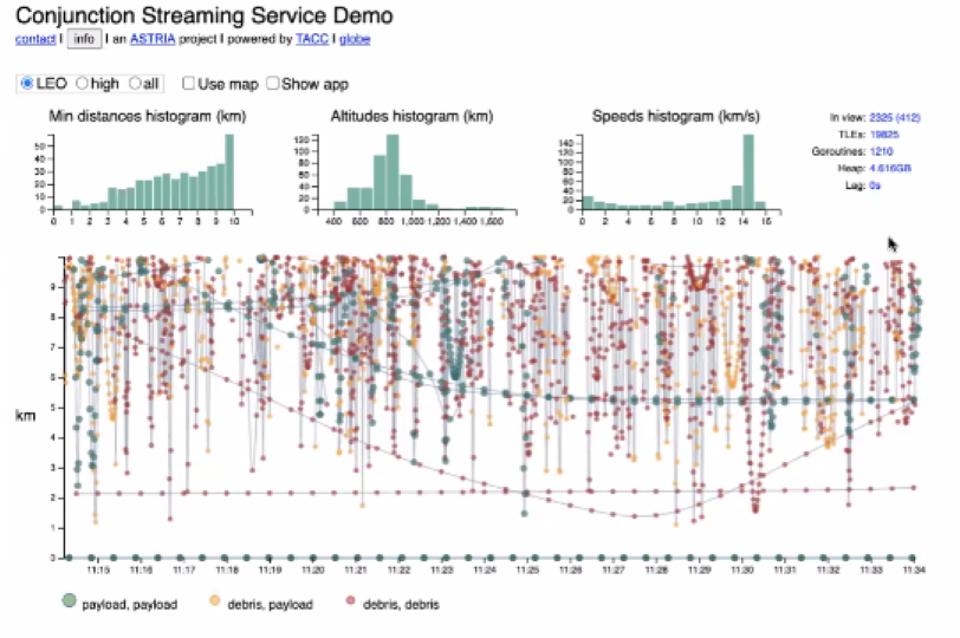
Credit: Moriba Jah/EAS 2021
2.) Orbital crowding is a real danger. Today, there are slightly fewer than 4,000 active satellites in low-Earth orbit, with approximately half of them having been launched since 2019. Roughly every two minutes, there will be a pair of satellites that comes uncomfortably close to one another: within ~2 kilometers, at speeds typically around 10 kilometers per second (22,000 mph). The dangers of orbital crowding are severe and significant:
- Every time you launch a new satellite, you have to raise it to its final orbit, which entails passing through the orbital shells of all lower-orbit satellites.
- Collision-avoidance systems must be automated, but they cannot account for satellites that fail (approximately 1% of those launched so far) or those that get knocked offline by inevitable space weather events.
- Any collision that does occur will send large fragments of debris throughout space, to both higher and lower orbits, where they can damage or destroy numerous other satellites. In a worst-case scenario, they can trigger a runaway chain reaction known as Kessler syndrome, rendering low-Earth orbit impassable for decades or even centuries.
Despite the known and quantified risks, no substantial progress has been made toward internationally coordinating the carrying capacity of various orbits. Until we treat them as an accessible, regulated resource, it’s literally a case of every child’s nightmare scenario when it comes to the playground: being faced with an older, bigger child who asserts, “I was here first.”

Credit: Tim Abott/CTIO
3.) The creeping problem of aggregate light pollution from satellites. From a pristine location on Earth, with no artificial light pollution at all, you still couldn’t see all the stars that were present. The reason is twofold: the human eye can only see objects that rise above a certain brightness threshold and the stars need to be a certain amount brighter than the overall, aggregate background of light. This plays a major role during the day, when the sun’s brightness illuminates the sky, but it also occurs on moonless nights when the cumulative light from all the stars brightens the sky.
Individual stars are the signal. The cumulative brightness of the sky is noise. Unless the signal rises sufficiently above the noise, you won’t see what you’re seeking. While light pollution from the ground is the greatest contributor to this “noise” from most locations on Earth, the presence of large numbers of satellites will take over, especially at dark, remote locations.
The reflected light from a full 50% of these satellites will strike the Earth’s night side at any given time, increasing the overall sky brightness substantially when large numbers of satellites are up. Any non-functioning satellite will tumble and spin out of control, increasing their average brightness and causing flaring spikes in their reflectivity. If we do nothing to mitigate this, ground-based astronomy could cease to be useful for faint, deep-sky observing within a single generation.
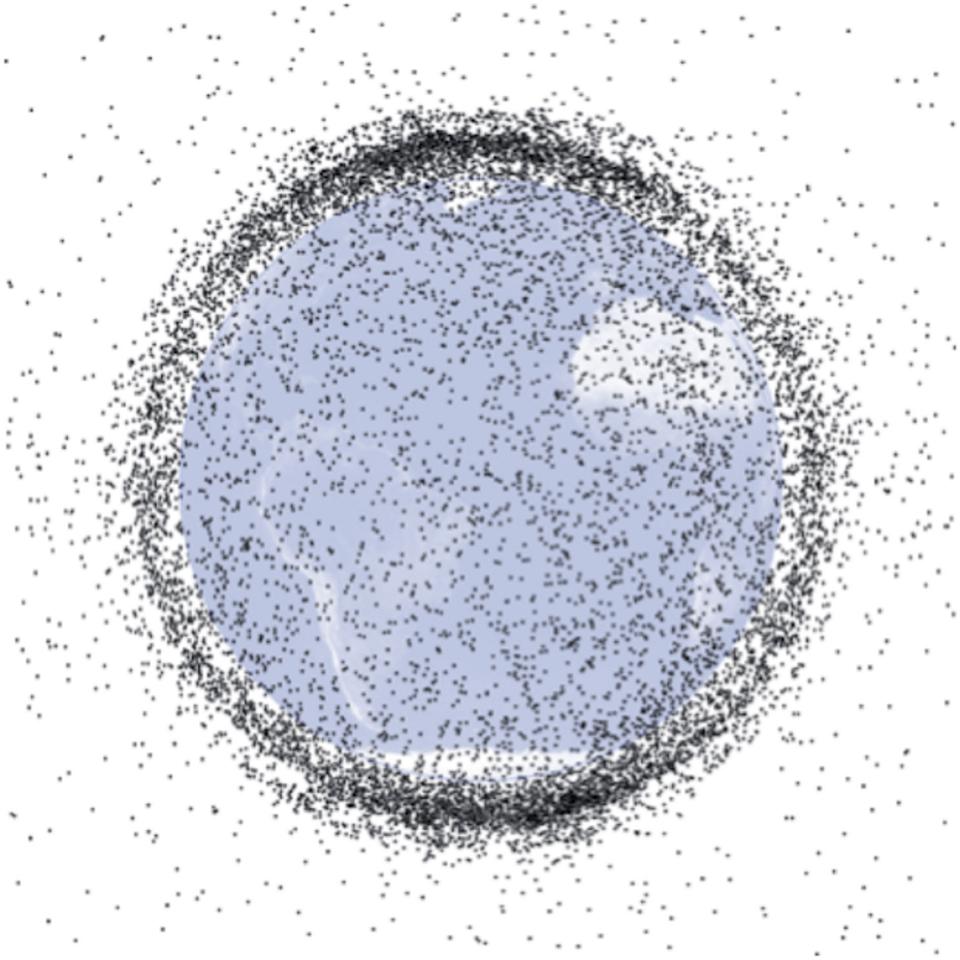
Credit: NASA/Orbital debris program office
4.) Satellite failures will lead to a march of debris. You would think that having a 99% success rate for satellites would be an excellent thing, which SpaceX has achieved for their first round of ~1700 Starlink satellites. (The most of any megaconstellation so far.) The problem is that those failures — even if they remain at a low, ~1% rate — will add up over time. At altitudes of ~600 km or so, it can still take years or even decades for a failed satellite to naturally deorbit. At higher altitudes of ~1000 km or above, like OneWeb’s satellites, they can remain in orbit for millennia.
Failed satellites pose a series of dangers. There is no way, at present, to remove those failed satellites from orbit en masse. A failed satellite has no capacity for avoiding collisions or having its orientation controlled. But worst of all, if these satellites are a critical part of our infrastructure, a failed satellite needs to be replaced by a new, active satellite, without the ability to remove its failed predecessor.
Imagine that we wind up with the projected ~100,000 satellites orbiting Earth by 2030. Now imagine that they have a 1% failure rate and need to be replaced, as currently projected, every ~5 years. Over a century, that translates into a total of 2 million satellites launched, with a total of ~20,000 satellite failures that we’re unable to control or de-orbit. In addition to posing collisional risks and polluting our astronomical images with streaks and artifacts, they’ll reflect sunlight and brighten our night skies globally.
The longer we continue to apply the model we presently use for consumer electronics to satellites — that they’re disposable and replaceable — the more severe this problem will become.
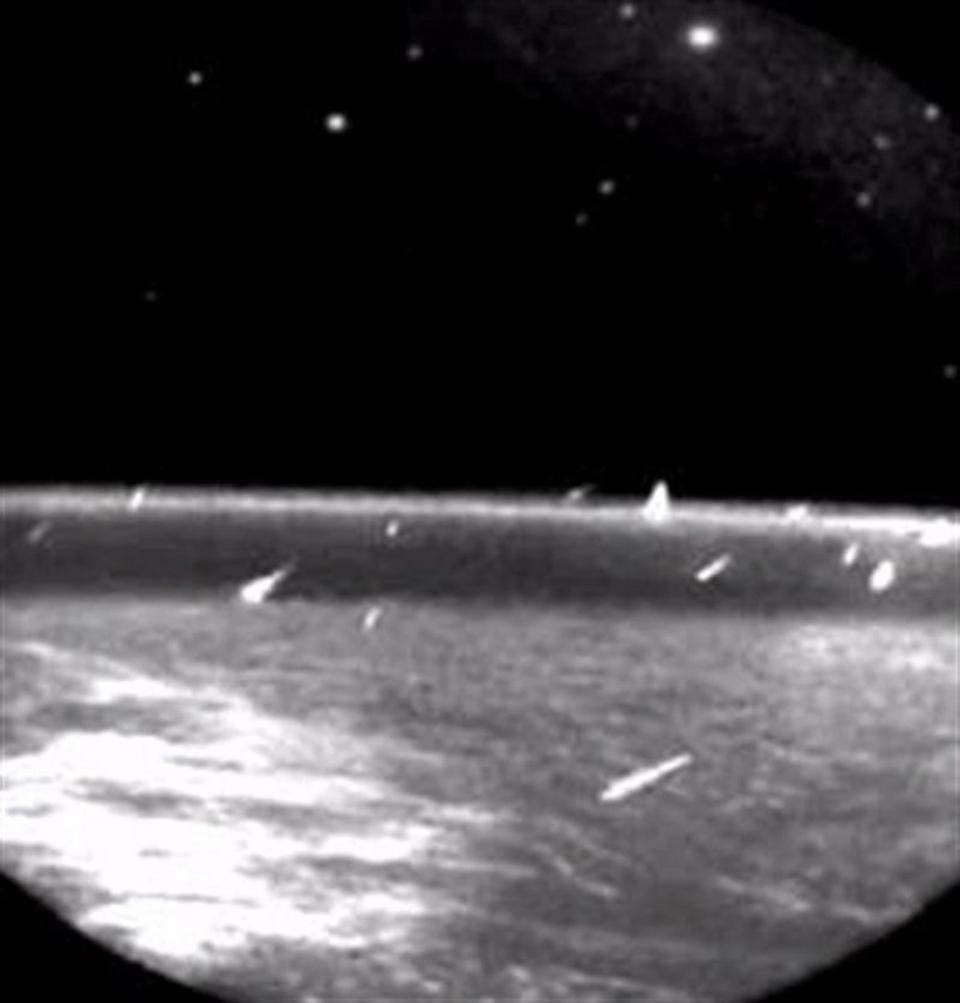
5.) Over the long term, satellites will pollute Earth’s atmosphere. This problem might seem counterintuitive. After all, many people might wonder, “How could a satellite in space pollute Earth’s atmosphere?” But the issue doesn’t center on the pollution associated with rocket launches; that is entirely separate. Every day, material from space impacts the Earth in the form of meteoroids, to the tune of approximately 54 tons per day. Most of that material is oxygen and silicon: typical of rocks. A small percentage of that material is metallic, like iron, nickel, and aluminum. Each day, approximately a half-ton of aluminum gets added to Earth’s atmosphere from natural causes within the solar system.
If we have ~100,000 satellites that need replacing every 5 years, however, those satellites will eventually de-orbit and burn up in Earth’s atmosphere. Assuming that each satellite is similar to the current generation of Starlink satellites, this could add approximately 14 tons of aluminum to the atmosphere every day: some ~30 times the naturally occurring amount. Aluminum can have a number of impacts on Earth, including:
- the additional seeding of clouds
- changes to Earth’s reflectivity and heat-trapping properties
- the destruction of stratospheric ozone molecules
- disruption of atmospheric circulation at a variety of altitudes
Seeding the atmosphere with aluminum, deliberately or not, will function as a geoengineering experiment. If we do not regulate or limit these atmospheric additions, we will further alter Earth’s climate simply by launching and de-orbiting a large number of satellites.
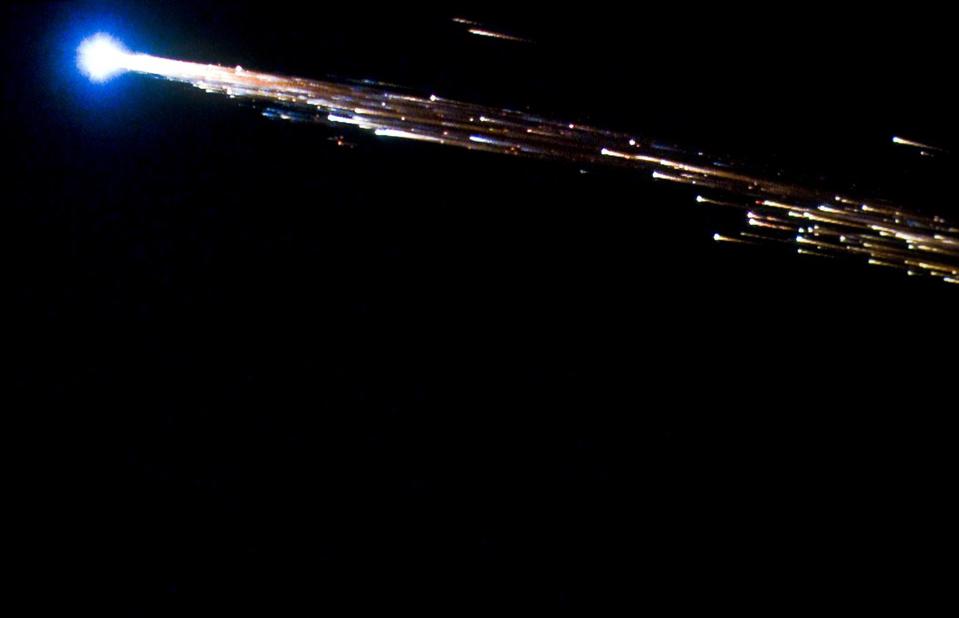
Credit: NASA
All of these reasons, plus additional ones that are omitted here (but are touched upon in the SATCON2 executive summary), highlight the importance of taking the appropriate set of actions now. Much like climate change, air and water pollution, ocean acidification, and other environmental issues, it’s very unlikely that we’re going to see a sudden, dramatic change. Instead, the consequences will slowly creep out above us, and they won’t become apparent to most people until it’s far too late to do anything meaningful about it.
The do-nothing scenario pretty much ensures outcomes that no one wants to see. Satellite providers that serve equatorial latitudes will send large numbers of satellites up to ~600 km altitudes and below, while high-latitude providers will send smaller number of satellites to higher altitudes, ensuring that there are no windows available where wide-field observatories can observe without the pollutive effects of satellites. This will most negatively impact the tracking and identification of potentially hazardous objects, like asteroids and Kuiper belt objects. It will literally put our planet as risk.
The stars in the night sky will get washed out because of increased light pollution. Peripherally visible streaks, under dark skies, will begin to outnumber the stars. Earth’s orbit will become more crowded and collisional risks will increase. And the pollution of our atmosphere will intensify in new ways. If we wait until these problems lead to disaster, it will be too late to do anything meaningful about them.
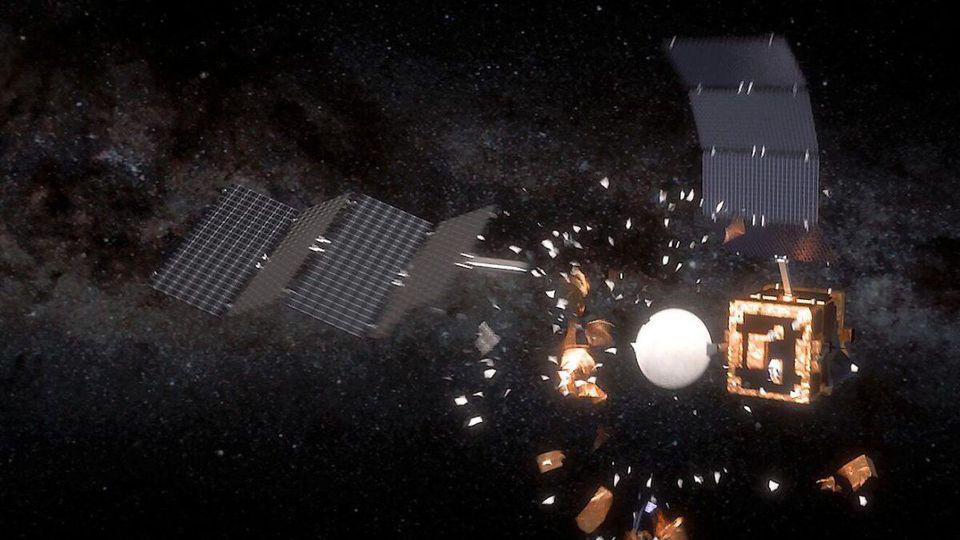
Credit: ESA/Space Debris Office
That’s why listening to the recommendations of the four SATCON2 working groups is such an important and timely issue. Although it’s not an exhaustive list, their recommendations include:
- Establishing SatHub, which will create a unified, standardized set of tools for scientists, telescope operators, satellite providers, students, and developers.
- Creating a set of software tools that will mask satellite trails, simulate polluted datasets, and predict when astronomical targets will be affected by satellite passes.
- Engaging with communities outside of professional astronomers, including astrophotographers and astrotourists, amateur astronomers, indigenous communities, planetariums, and environmental and ecological stakeholders,
- Craft policies, ranging from international laws and treaties to environmental protections that consider the impact of the satellite constellation industry on planet Earth and its ecosystems.
The common thread running through all of these points is a sense of urgency. The night sky is rapidly and abruptly being transformed and we need to invest in the aforementioned initiatives such as SatHub, which will be required to continue the science of ground-based astronomy.
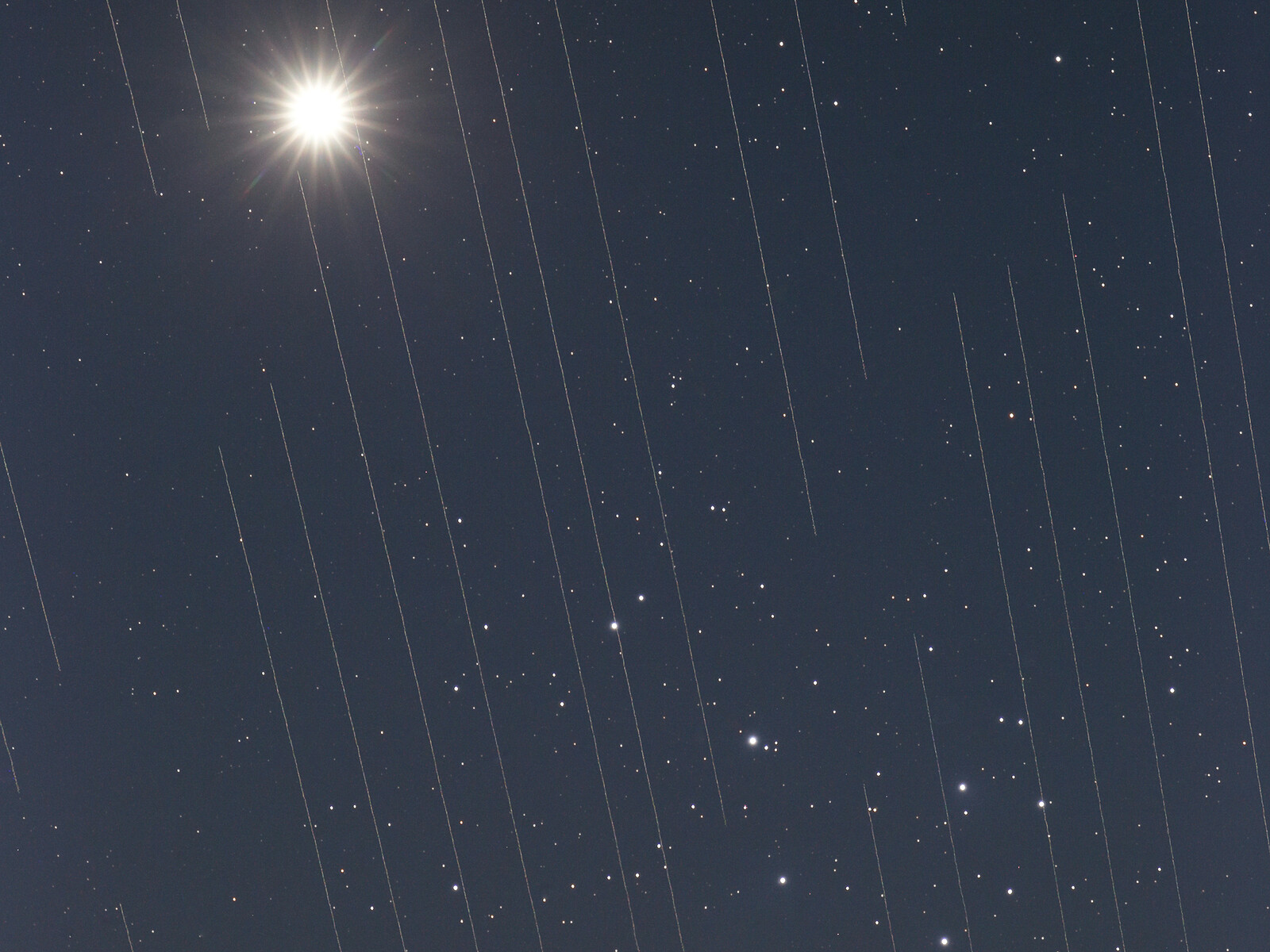
Currently, all of these endeavors are entirely unfunded. Every action and recommendation undertaken by the astronomical community has been done pro bono, while the satellite industry is projected to grow into a 13-figure enterprise throughout the century. Since it’s not pragmatic to eliminate these problems by mandating that providers cease to launch satellites, we must all learn to live and work together while minimizing and mitigating the collateral damage as much as possible. As the attendees of SATCON2 stated in their executive summary:
“Tens of thousands of satellites in [low-Earth orbit] will inevitably create negative impacts for ground-based astronomy, for ground-based amateur, environmental, and cultural stakeholders, and possibly for space-based interests in comparable orbits, all of which will play out in an arena poorly equipped with policy to manage them. The canvas for unintended consequences and conflict is solidly in place. […] We are on the threshold of fundamentally changing a natural resource that since our earliest ancestors has been a source of wonder, storytelling, discovery, and understanding of ourselves and our origins. We transform that at our peril.”
While we cannot ignore the short-term, abrupt, and high-consequence scenarios that may arise, we have to look at the opportunity before us. We can, at long last, avoid and prevent a long-term increase in negative, cumulative effects on our world, our environment, and the oldest of all scientific pursuits: astronomy. By effectively and urgently filling these policy gaps, we can create a long-term, sustainable future where all stakeholders wind up with a bright future.
